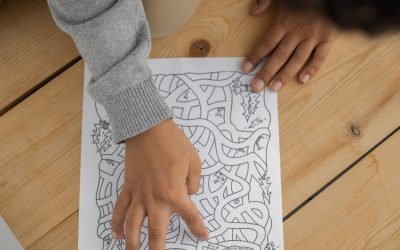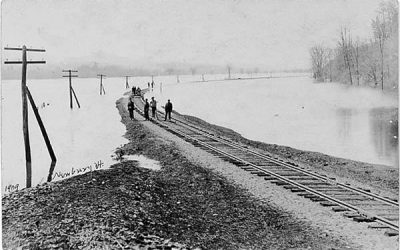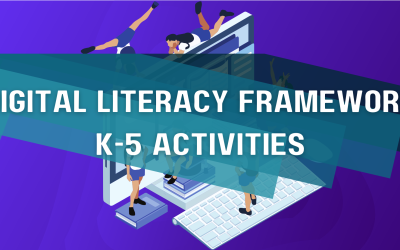Overview
Using kinetic sand and the picture book, How to Code a Sandcastle, learners will be planning, creating, and decorating a sandcastle in a series of building challenges. Using step-by-step instructions, critical thinking and digital literacy skills, students will gain an experience of what being a computer programmer is really like!
NB Curricular Connections
English Language Arts
- Strand: Interactions – Big Idea: Exchanges – Skill Descriptor: Give and follow directions and instructions.
Personal Wellness
- Strand: Career Connected Learning – Big Idea: Experiencing Potential Career Pathways – Skill Descriptor: Engage in frequent and ongoing career connected experiential learning to learn about preferred career pathways and develop personal competencies.
What You’ll Need
- Book – How to Code a Sandcastle (by: Josh Funk) *available on Sora
- How to Code a Sandcastle Student Printables (How to Code a Sandcastle Student Guide)
- Pencils
- Kinetic Sand (enough for small groups)
- 2-3 bananas
- Plastic tablecloth (blue for ocean)
- Small, plastic cups (for sand pails)
- Toothpicks
- Mini seashells (optional)
- LIVE Session recording
Instructions
HOW DO YOU EAT A BANANA? CHALLENGE: The first challenge for students to think about is “How Do You Eat A Banana?” Have students grab a partner and discuss the steps it would take to explain to someone else (who may never have eaten a banana before) how that process is done. Discuss: “How many steps did you come up with? Did you include everything needed to eat one?” Have a few learners share their sequence of steps and use a real banana, following along with their steps, to see if they have all the specific details needed to be successful in eating a banana. View 8:11 – 14:38 of the LIVE Session recording. Allow students to listen in on how simple and complex these steps could be and that these steps are called – ALGORITHMS in the digital world.
SMALL PROBLEM #1: FIND A PLACE TO BUILD: Gather together. ONLY read up to Small Problem #1 in the book, How to Code a Sandcastle (until pg.8). Watch the LIVE Session recording from 16:01 – 17:34. Next, using the plastic tablecloth, set up the “beach” (tablecloth) in your classroom and have students find a place in the shallows that they feel would be a great place to build their sandcastle. Using the printable, Small Problem #1: Find A Place to Build, from their current desk/table spots, have learners write out their directions, step-by-step, from their current location to their perfect sandcastle building spot. Allow some learners to share their algorithms and test them out! Discuss: How many steps did everyone use? Why are our number of steps not the same?
SMALL PROBLEM #2: GATHER UP SAND: Return to the read aloud and ONLY read page 9 (Small Problem #2: Gather Up Sand). Pass out kinetic sand and small plastic cups (sand pails) to each learner or small group. Whether using portions of sand or one huge pile, re-read the 3 instructions and have students follow each step (once) with their materials. Then, say, “STOP! Is that enough sand for your sandcastle? What would we do on a computer if we wanted the keep these actions repeating?” Watch 21:08 – 27:08 of the LIVE Session Recording to learn more about LOOPS. Have students continue filling up their buckets into a large pile. Discuss: How many pails did it take? Why are our answers not the same?
SMALL PROBLEM #3: SHAPE AND DECORATE THE CASTLE: Return to the read aloud and ONLY read pages 15-20 (Small Problem #3: Shape and decorate the castle). Pass out remaining materials – toothpicks, seashells, extra decorations, etc. for learners to use. View from 30:15 – 32:45 of the LIVE session recording for further instructions with solving this small problem. Students will also use the printable, Small Problem #2: Shape and Decorate Your Sandcastle to write out their algorithms. Take the time to SHOW and SHARE – take a walk at the beach (around the classroom) and celebrate the creativity and sandcastle designs.
NEXT STEPS & CAREER CONNECTIONS: Read the remaining pages of the read aloud. Take a few minutes and reviewing today’s learning activity and have students share about their experiences and discuss: What did I learn about coding today that I never knew before? Were there any challenges that I faced and how did I overcome them? Do I use algorithms in my daily life and what are they? What was my favorite part of this activity and why? Is there more to code than I thought? If students loved this activity, watch 34:55 – 39:57 of the LIVE Session Recording for future career paths connected with coding – Programmer and UX Designer.
Extension Ideas
– Invite learners to swap their Sandcastle Algorithms to see if they can create it with the steps given. Allow groups to provide feedback and give time for changes needed.
– Invite another class to use the created Sandcastle Algorithms to see if they can re-create the Sandcastles. Gather together to share the experience.
Digital Literacy Framework

Reflection Activity
Please see the attached PDF for several choices on how you and your learners can reflect upon today’s activity.






